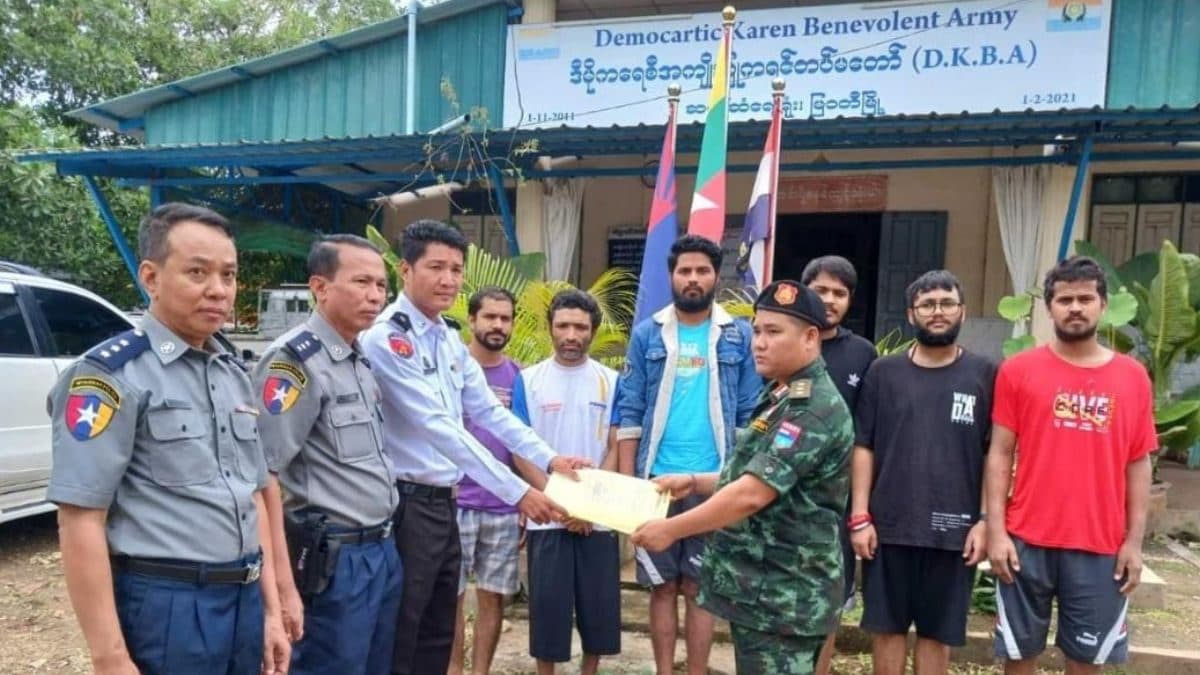The recent rescue of several Indian youths from a cybercrime gang in Myanmar has highlighted the growing threat of human trafficking and cybercrime in Southeast Asia. These youths, lured by the promise of good jobs in Thailand, were instead sold into forced labor and made to participate in cybercrime activities.
The Lure of a “Good Job” and the Reality of Cyber Slavery
Vidhan Gautam, a 24-year-old computer operations diploma holder from Dehradun, is one such victim. He and five others were lured to Thailand by an agent, with the promise of a good job. However, upon reaching Thailand, they were forced to illegally cross the Moie River, a natural border separating Thailand and Myanmar. They were then sold to a cybercrime cartel operating in Myawaddy, the fourth largest city in Myanmar.
Forced into Cybercrime
The victims were subjected to brutal treatment, including physical beatings, and forced to engage in cybercrime activities. They were given daily targets and forced to work around the clock, often for 12 hours a day or more, under the constant supervision of their captors. Vidhan reported that the cybercrime gang included victims from various countries, including India, Bangladesh, and Pakistan, all forced into a life of cyber slavery.
The Escape and the Cost of Freedom
The victims managed to buy a mobile phone and contacted the Indian authorities, with the help of a local. The Indian Embassy, in collaboration with the Thai authorities, contacted the Myanmar Army. Eight of the Indians were fined $1500 each by the Myanmar Army and were detained for a short period. Subsequently, they were deported to Thailand and again jailed for a month.
The ordeal did not end there. The cybercrime gang contacted the victims’ families, demanding a ransom for their release. Vidhan’s family paid $2000, while others paid up to $5000. The rescue was a costly one, not just in terms of money but also the physical and emotional toll it took on the victims and their families.
The Growing Trend of Cybercrime and Human Trafficking in Southeast Asia
Southeast Asian countries like Laos, Cambodia, and Myanmar have become havens for cybercrime cartels who exploit vulnerable individuals. The victims, lured by the promise of a better life, find themselves trapped in a dangerous cycle of exploitation and violence.
The case of Vidhan and the other rescued victims is not an isolated incident. Earlier this year, the Indian Embassy in Cambodia reported the rescue of 60 Indians from cyber gangs. The prevalence of these criminal operations raises serious concerns about the lack of regulation and enforcement mechanisms in these countries.
A Complex Problem
Several factors contribute to the growth of cybercrime and human trafficking in Southeast Asia:
- Economic Disparities: Poverty and unemployment create an environment where people are vulnerable to being exploited.
- Weak Law Enforcement: In some countries, there is a lack of strong law enforcement and weak judicial systems, making it easier for criminal gangs to operate with impunity.
- Corruption: Corruption within government agencies can facilitate criminal activities, enabling cartels to evade legal scrutiny.
- The Rise of Technology: The advancements in technology have made it easier for cybercriminals to operate and recruit victims from across the globe.
The Need for Collective Action
The rescue of Vidhan and the other victims is a testament to the urgent need for international collaboration to combat this growing menace. There is a need for:
- Increased Cooperation between Governments: Governments need to work together to share intelligence, coordinate rescue operations, and prosecute those involved in cybercrime and human trafficking.
- Stronger Law Enforcement: Governments must strengthen law enforcement capabilities and enhance legislation to target cybercrime cartels and prosecute them effectively.
- Awareness Campaigns: Raising awareness about the dangers of human trafficking and cybercrime is crucial. Educational programs targeting vulnerable populations are necessary to equip them with the knowledge to protect themselves.
- Protecting Victims: Victims of cybercrime and human trafficking require support and assistance to recover and reintegrate into society. Providing medical, psychological, and legal aid is essential.
Takeaway Points:
- Cybercrime and human trafficking are serious global problems with a significant impact on Southeast Asia.
- Southeast Asia has become a haven for cybercrime cartels, often operating with impunity due to weak law enforcement and corruption.
- The victims, mostly lured by promises of lucrative jobs, are forced into slavery, subjected to violence and made to participate in illegal activities.
- Addressing this issue requires a multifaceted approach involving increased cooperation between governments, stronger law enforcement, awareness campaigns, and support for victims.
- Combating these crimes is not only a moral obligation but also essential to safeguard the well-being of vulnerable populations and promote global security.




